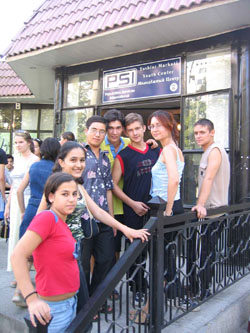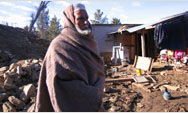You are here » Home » Telling Our Story
Case Study
More than 150,000 youth learn about drug risk and HIV/AIDS prevention
Centers Provide Youth with an Outlet

Photo: PSI/ Rob Gray
The Youth Power Center in Tashkent, Uzbekistan, is one of seven in Central Asia that provides youth with support and much-needed education on health risks.
A recent survey carried out in the seven Youth Power sites showed significant improvements in youth knowledge, attitudes, and behaviors related to drug use, sexual behavior, and HIV/AIDS.
Challenge
In Central Asia, most new cases of HIV are the result of young people injecting drugs. Youth in Kyrgyzstan, Tajikistan, and Uzbekistan living along the drug trafficking routes used to transport Afghan heroin to Russia and Europe are at high risk of initiating injection drug use and suffering from related problems, such as addiction, overdose, and HIV infection.
Initiative
To counteract this risk, USAID supports a network of seven Youth Power Centers dotting the main drug trafficking routes running through Central Asia. The Youth Power Centers work with youth ages 15 to 25 living in neighborhoods where heroin use is common. The centers attract youth at highest risk of becoming injecting drug users (IDUs) and equip them with knowledge and skills to make informed, healthy decisions about drug use and sexual behavior. Since early sexual debut can place adolescents at increased risk of unintended pregnancy, HIV, and other sexually transmitted infections, the centers aim to delay the age youths start becoming sexually active and prevent risky sexual behavior. At the centers, resources and attention focus especially on young people who regularly socialize with IDUs and therefore are most likely to begin injecting drugs and, as a result, contract HIV.
Results
The Youth Power program has educated more than 150,000 at-risk young people on drugs and HIV prevention, reaching more than 70% of the estimated youth population living in the seven target sites in Kyrgyzstan, Tajikistan and Uzbekistan. A recent survey carried out in these sites showed significant improvements in youth knowledge, attitudes, and behaviors related to drug use, sexual behavior, and HIV/AIDS. For example, more Uzbek youth could cite ways to prevent HIV (increasing from 23% of youth to 39%), and the age of sexual debut among Tajik youth increased from 18.7 years to 19.2 years.
Print-friendly version of this page (533kb - PDF)
Click here for high-res photo
Back to Top ^ | 

